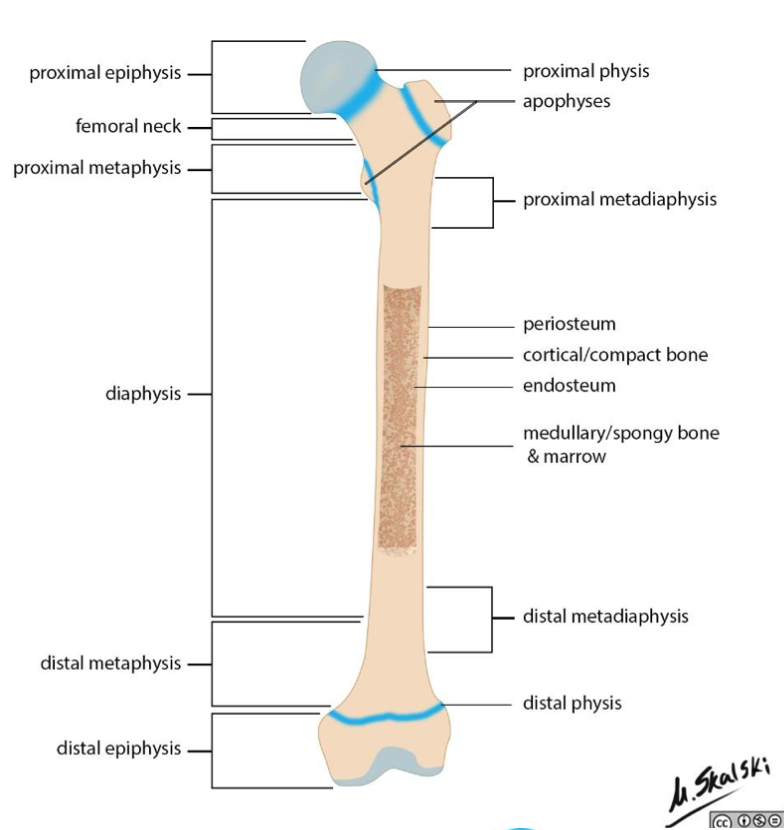
Physeal Stress Injuries in Youth Athletes
The physis is the part of the bone where the growth plates are located. These structures are relatively weak compared to the surrounding bone because the cells have not yet matured. Excessive compression or shearing (sliding) that occurs at these regions expose the bone to injury.

Stress injury to the physis may permanently deform the bone, leading to bone length discrepancy malalignment of the affected limb. In adolescent athletes, the proximal humerus (shoulder), distal radius (wrist), distal femur (knee) and proximal tibia (knee) are most prone to injury. High stress activities like gymnastics and field sports have high incidence rates due to high impact movements. Between 10-85% of gymnasts demonstrate radiographic evidence of physeal stress reactions.

Secondary pathology may occur including impingement of soft tissue (TFCC in the wrist), degenerative joint disease, and chronic pain. Involvement of the knee may lead to the development of bow-legged (genu varum) pathology.
Physeal stress injuries are often treated with rest and limited weight bearing on the affected limb. Allowing time for the growth plate to properly develop can mitigate the effects of altered limb length discrepancy and joint deformity.
If you are a youth athlete, parent of a youth athlete or coach youth athletics in Miami, Florida and have questions about information presented in this post, give our office a call. We offers seminars to educate the community on best practices for keeping youth athletes participating in sport. As a lifelong athlete myself, I can appreciate the time, effort and role parents and coaches can play in the development of their children. My goal is to keep as many people participating in athletics for as long as possible.